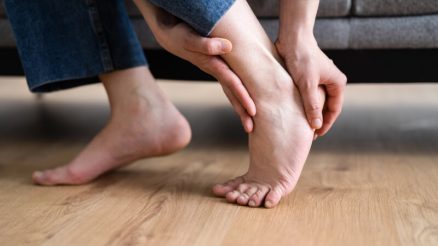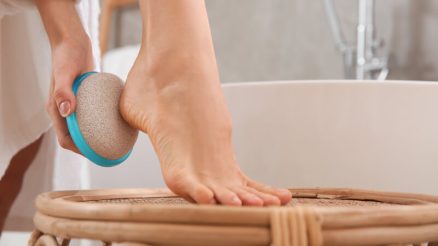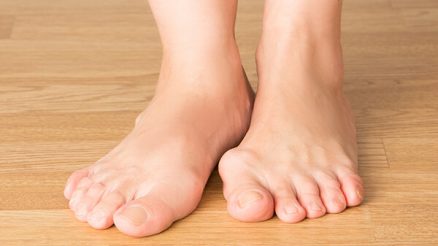For millions, standing isn’t just a part of the job; it is the job. From healthcare professionals and retail workers to chefs, factory workers, and teachers, spending hours on your feet can take a serious toll on your lower extremities. While it might seem like just a minor discomfort at first, neglecting your feet can lead to chronic pain, fatigue, and even serious health issues.
But fear not! Taking proactive steps to care for your feet can make a world of difference. This detailed guide will walk you through essential strategies to keep your feet happy, healthy, and ready to tackle another day.
Why Your Feet Deserve Extra Attention
Your feet are complex structures, each containing 26 bones, 33 joints, and over 100 muscles, tendons, and ligaments. They bear the full weight of your body, absorb shock, and propel you forward. When you stand for prolonged periods, the constant pressure can lead to:
- Fatigue and Aches: Muscles and ligaments become overworked.
- Swelling (Edema): Blood pools in the lower extremities due to gravity.
- Plantar Fasciitis: Inflammation of the tissue on the bottom of your foot.
- Bunions and Corns: Pressure points can cause structural changes and skin thickening.
- Varicose Veins: Increased pressure on leg veins.
- Back and Knee Pain: Foot issues can misalign your entire body.
Investing in proper foot care isn’t just about comfort; it’s about preventing long-term problems and maintaining your overall well-being.
Your Daily Foot Care Arsenal: Strategies for Relief and Prevention
1. The Right Footwear: Your Foundation for Comfort
This is arguably the most critical aspect of foot care for standers.
- Supportive Shoes are Non-Negotiable: Look for shoes with excellent arch support, ample cushioning, and a wide toe box that allows your toes to splay naturally. Avoid flat shoes, high heels, or shoes that are too tight.
- Consider Orthotics/Insoles: Even good shoes can be enhanced with over-the-counter or custom orthotics. These can provide additional arch support, shock absorption, and correct biomechanical imbalances.
- Rotate Your Shoes: Don’t wear the same pair every day. Rotating between two or three pairs allows shoes to air out, dry completely, and helps them retain their cushioning and support longer.
- Material Matters: Opt for breathable materials like leather or mesh to prevent moisture buildup, which can lead to fungal infections.
- Replace Regularly: Shoes lose their support and cushioning over time. Depending on how much you stand, you might need to replace your work shoes every 3-6 months.
2. Stretch and Strengthen: Keep Your Feet and Calves Flexible
Regular stretching can alleviate tension and improve circulation.
- Calf Stretches: Tight calf muscles can pull on the plantar fascia.
- Wall Push: Stand facing a wall, place hands on it. Step one foot back, keeping the heel down and knee straight. Lean forward until you feel a stretch in your calf. Hold for 30 seconds, repeat 3 times per leg.
- Stair Stretch: Stand on a step with your heels hanging off. Slowly lower your heels, feeling the stretch in your calves.
- Foot Stretches:
- Toe Curls: Place a towel on the floor and use your toes to scrunch it towards you.
- Marble Pick-Up: Place marbles on the floor and pick them up with your toes, placing them in a cup.
- Ankle Circles: Rotate your ankles clockwise and counter-clockwise to improve flexibility.
3. Soothe and Relax: The Power of Soaks and Massages
After a long day, your feet deserve some pampering.
- Warm Foot Soaks: A warm bath with Epsom salts can reduce swelling and soothe tired muscles. The magnesium in Epsom salts is known for its muscle-relaxing properties.
- Self-Massage:
- Use your hands to knead your arches, heels, and toes.
- Roll your foot over a tennis ball, golf ball, or a frozen water bottle for targeted relief, especially for plantar fasciitis.
- Professional Massage: If possible, consider a professional foot massage or reflexology session periodically.
4. Elevate Your Legs: Improve Circulation
Gravity is not your friend when you’re standing all day.
- Post-Work Elevation: Lie down and elevate your feet above your heart for 15-20 minutes. You can use pillows or prop your legs against a wall. This helps drain accumulated fluid and improves blood flow.
- During Breaks: If possible, try to sit down and elevate your feet even during short breaks.
5. Hydration and Nutrition: Fueling Happy Feet
Your overall health directly impacts your foot health.
- Stay Hydrated: Drinking plenty of water helps prevent muscle cramps and keeps your body functioning optimally.
- Balanced Diet: A diet rich in anti-inflammatory foods (fruits, vegetables, omega-3s) can help reduce overall inflammation in your body, including your feet.
- Maintain a Healthy Weight: Excess weight puts additional strain on your feet and joints.
6. Listen to Your Feet: When to Seek Professional Help
While these tips can provide significant relief, sometimes professional intervention is necessary. Consult a podiatrist or healthcare provider if you experience:
- Persistent Pain: Pain that doesn’t improve with rest or home care.
- Numbness or Tingling: Could indicate nerve issues.
- Sudden Swelling or Redness: May signal an infection or other serious condition.
- Changes in Foot Structure: Such as developing bunions or hammertoes.
- Difficulty Walking: If foot pain significantly impacts your mobility.
Your Daily Foot Care Checklist
Make these habits part of your routine for healthier feet:
- Before Work: Choose supportive, rotated shoes.
- During Work: Take short breaks to sit, stretch, or elevate feet if possible.
- After Work:
- Stretch your feet and calves.
- Soak your feet in warm water with Epsom salts.
- Massage your feet.
- Elevate your legs for 15-20 minutes.
- Stay hydrated throughout the day.
Conclusion
Your feet are incredible workhorses, supporting you through countless hours of standing. By implementing these simple yet effective foot care strategies, you’re not just alleviating immediate discomfort; you’re investing in your long-term health and well-being. Give your feet the care they deserve, and they’ll keep you standing strong for years to come.








